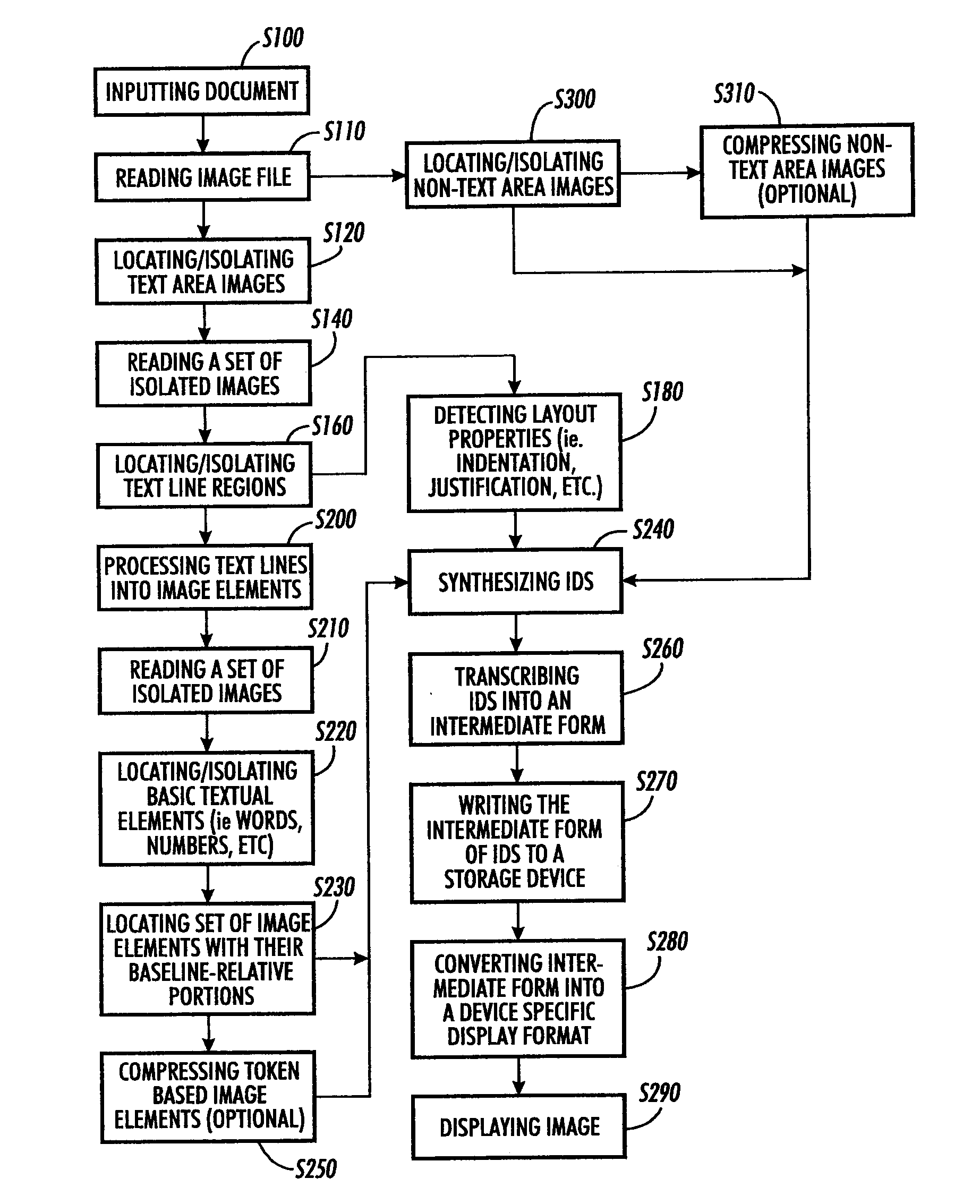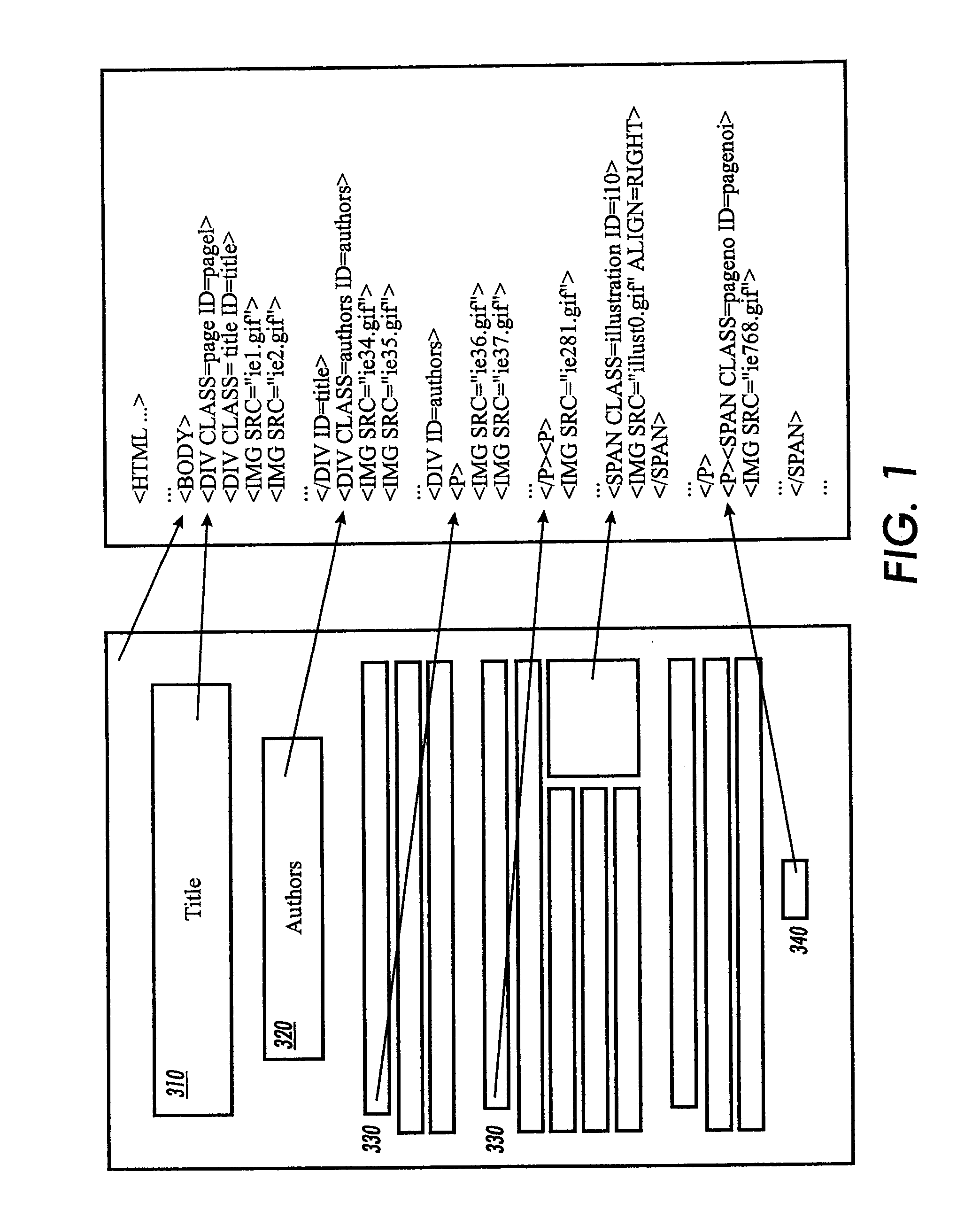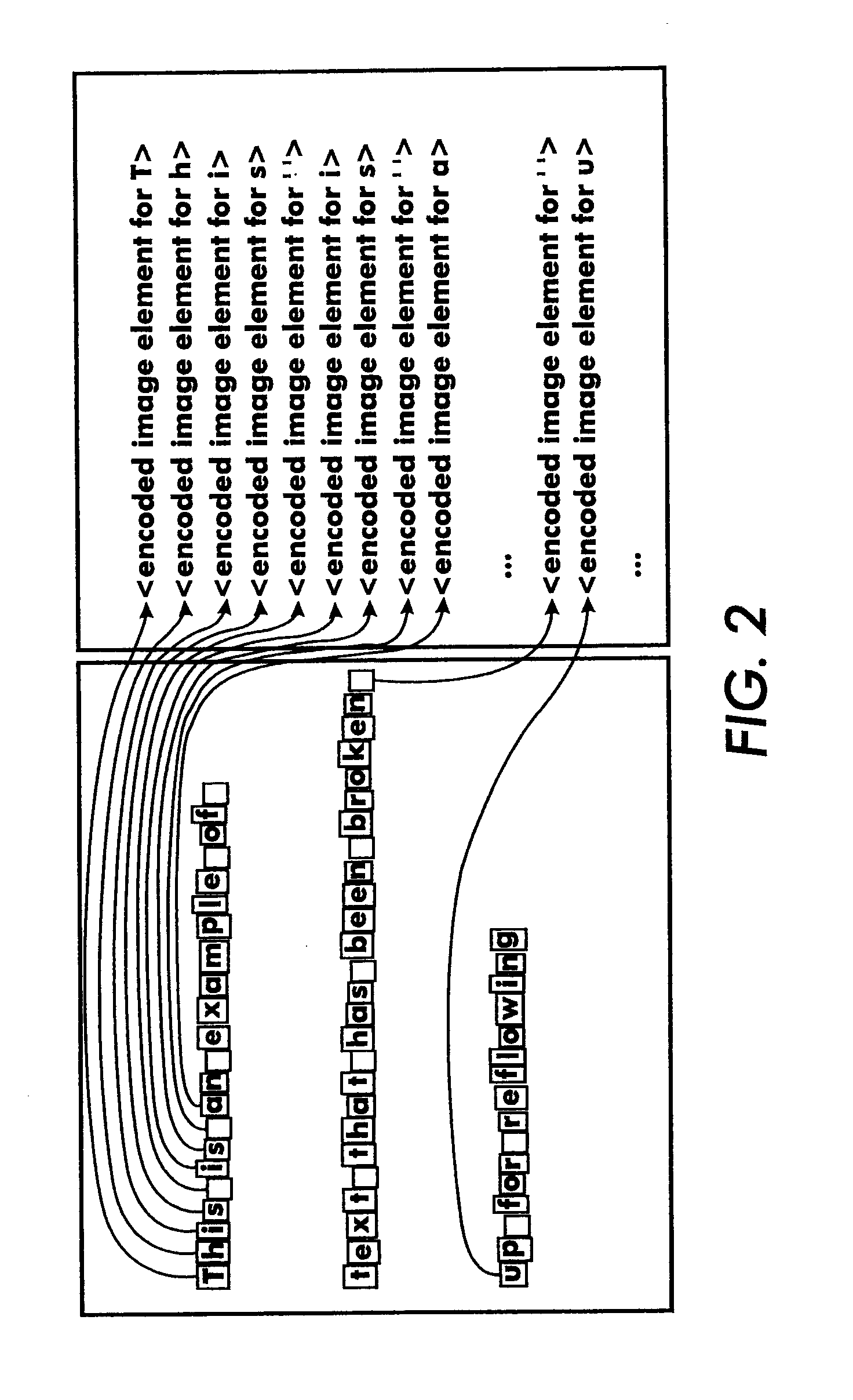Method and system for document image layout deconstruction and redisplay
a document image and layout technology, applied in the field of document image layout deconstruction and redisplay, can solve the problems of loss of meaningful or aesthetically pleasing typeface and type size choice, high cost of manual keying and/or manual tagging, loss of etc., to achieve complete understanding, high degree of legibility, and loss of the original document look and feel
- Summary
- Abstract
- Description
- Claims
- Application Information
AI Technical Summary
Benefits of technology
Problems solved by technology
Method used
Image
Examples
Embodiment Construction
[0034]FIG. 1 illustrates a detailed example of an intermediate data structure 260 for a page image 300. In FIG. 1 the intermediate data structure 260 is expressed using XHTML as an example of an intermediate data structure format. The page image 300 is shown schematically having a first text area 310 which functions as a title, a second area 320 which functions as an author list, third text areas 330 which function as paragraphs, and a fourth text area 340 which functions as a page number. The structures represented by these text areas 310-340 are usually significant to both the author and the reader, and so are detected and preserved in the intermediate data structure 260. For example, the intermediate data structure 260 preserves the title text area 310 by noting the position of this title text area 310 at the top of the page image, that the text area 310 is centered, and the large typeface used in this text area 310. The position is preserved in the intermediate data structure 26...
PUM
 Login to View More
Login to View More Abstract
Description
Claims
Application Information
 Login to View More
Login to View More - R&D
- Intellectual Property
- Life Sciences
- Materials
- Tech Scout
- Unparalleled Data Quality
- Higher Quality Content
- 60% Fewer Hallucinations
Browse by: Latest US Patents, China's latest patents, Technical Efficacy Thesaurus, Application Domain, Technology Topic, Popular Technical Reports.
© 2025 PatSnap. All rights reserved.Legal|Privacy policy|Modern Slavery Act Transparency Statement|Sitemap|About US| Contact US: help@patsnap.com



